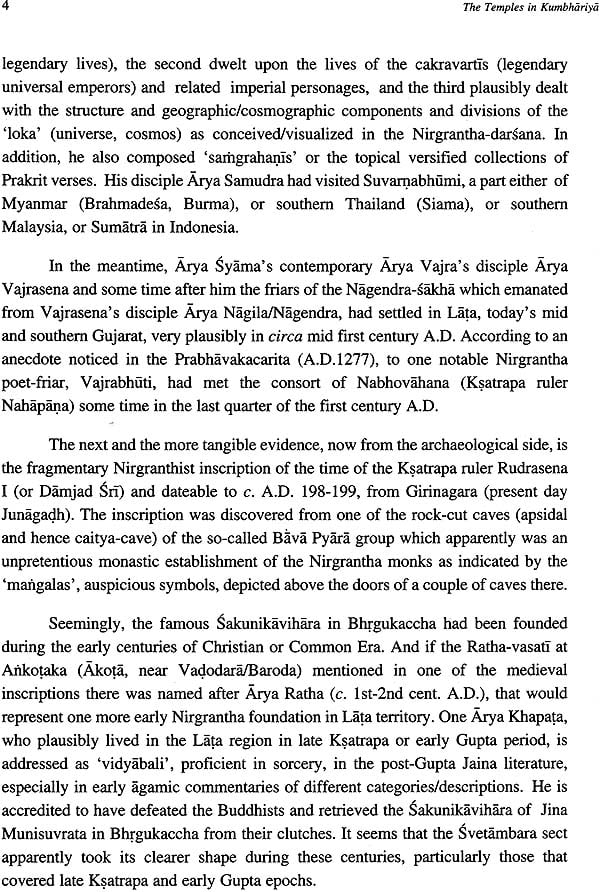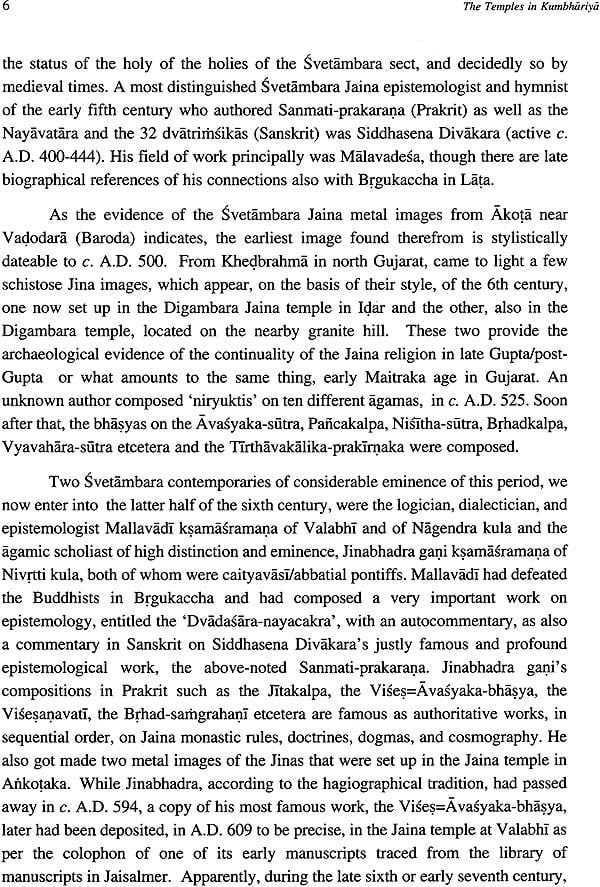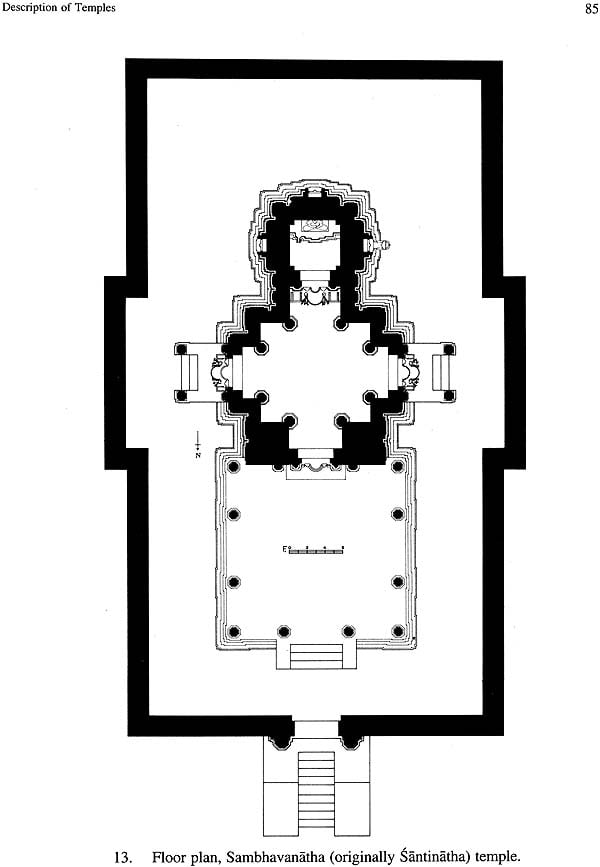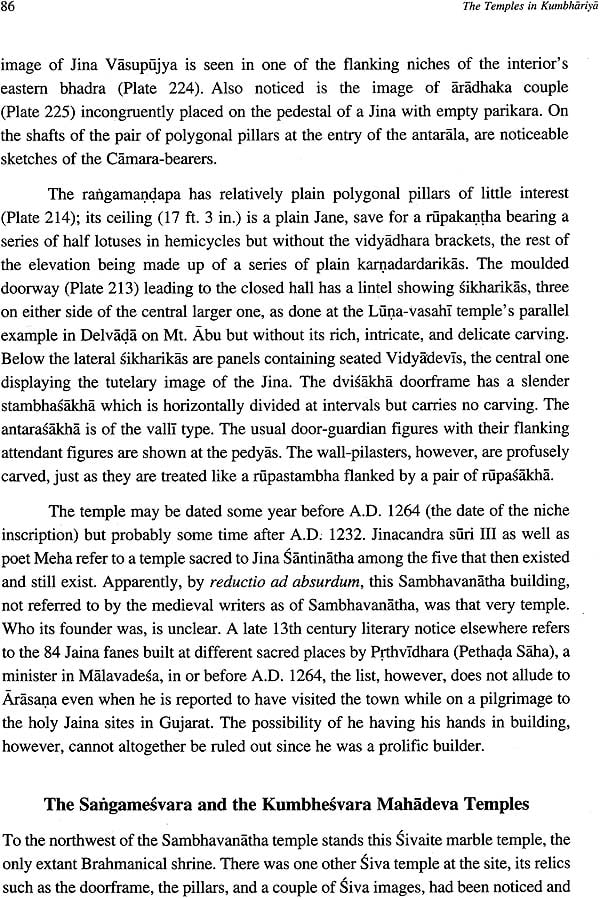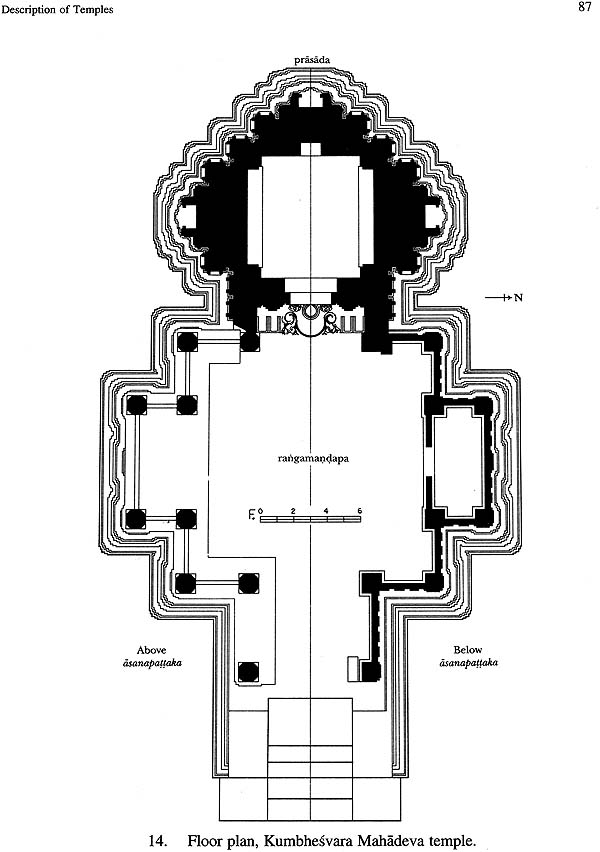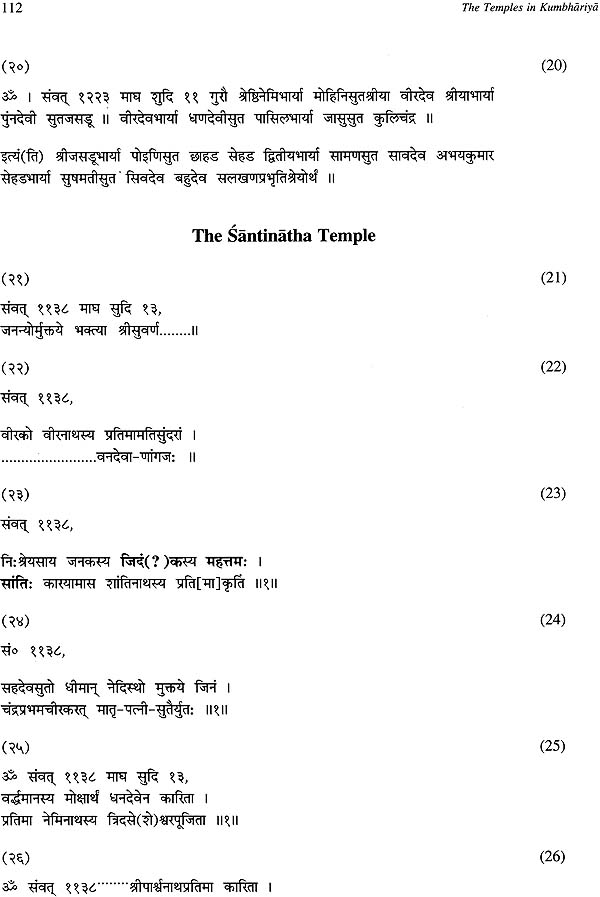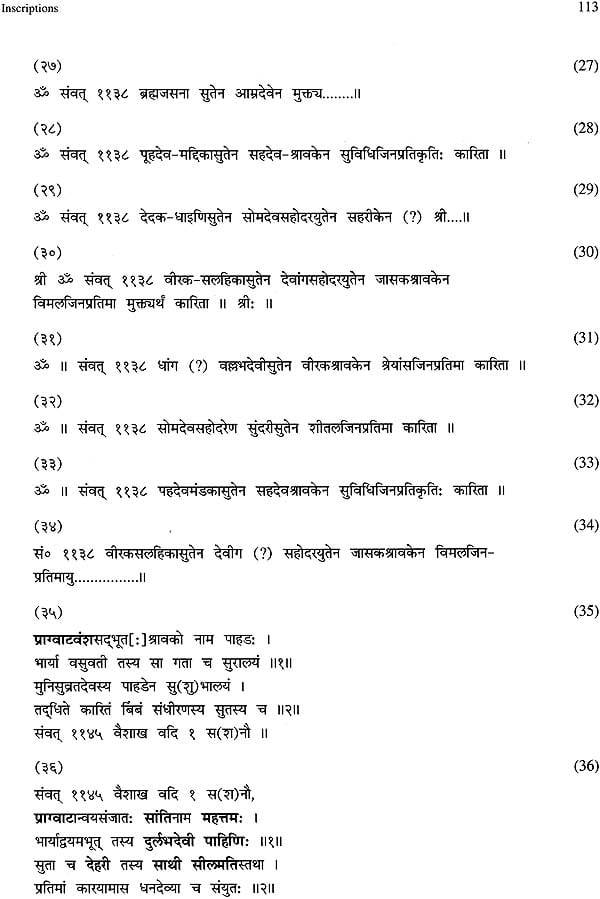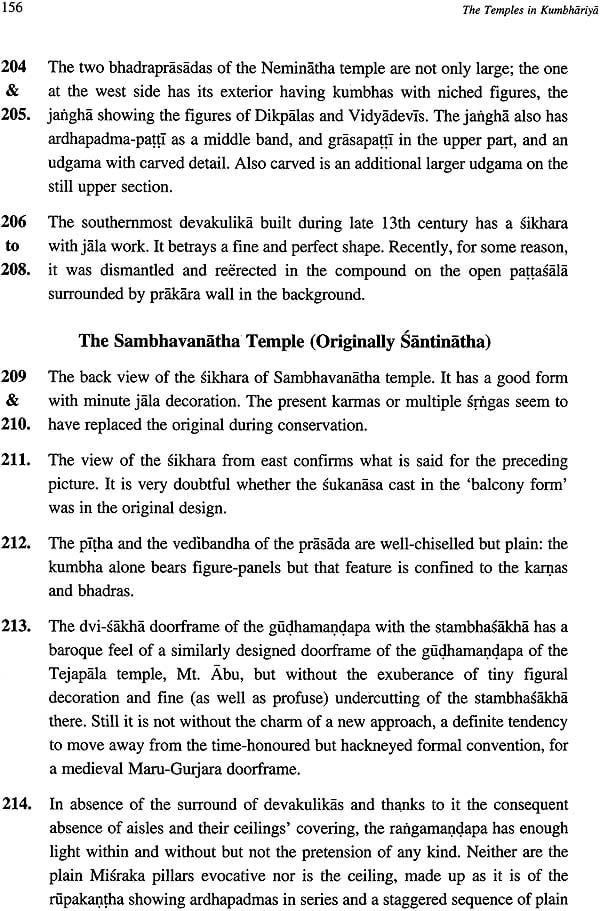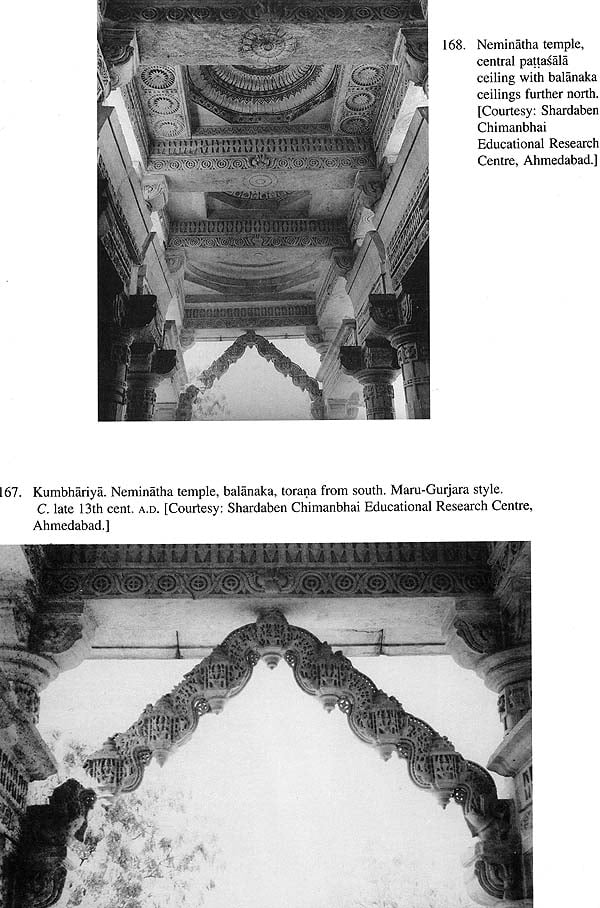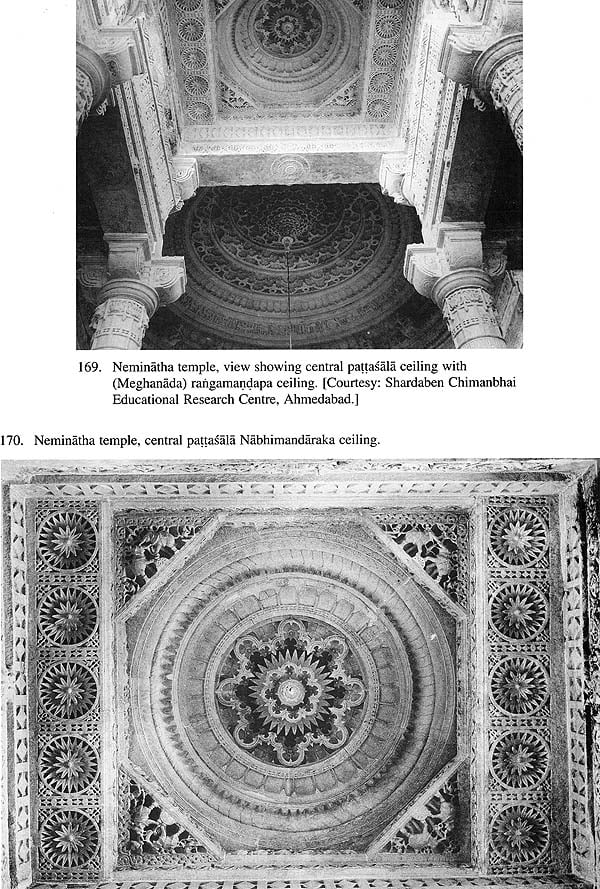
The Temples in Kumbhariya
Book Specification
| Item Code: | NAN006 |
| Author: | M. A. Dhaky and U. S. Moorti |
| Publisher: | Lalbhai Dalpatbhai Institute of Indology, Ahmedabad |
| Language: | English and Sanskrit |
| Edition: | 2001 |
| ISBN: | 8173044341 |
| Pages: | 369 (244 B/W Illustrations) |
| Cover: | Hardcover |
| Other Details | 11.0 inch x 9.0 inch |
| Weight | 1.80 kg |
Book Description
Kumbhariya (known anciently as Arasana or Arasanakara), now a non-descript hamlet, situated about a mile and half to the southeast of the famous holy tirtha- town Ambaji (Banaskantha district, Gujarat, India) and about 35 kms southeast of Mt. Abu was an important Jaina site in High Medieval times. Home to five exquisite Jaina temples and a Sivaite fane, these marble buildings, sacred to the faithful, were built during the Solanki period between the 11th and the late- 13th centuries A.D.
Being the smallest remainder of the precious architectural wealth of the past, they per se assume impotance as very valuable visual documents of Jaina art and architecture of the medieval epoch in Gujarat. This work, for the first time delineates and accounts comprehensively albeit pointedly the historical, socio- religious and cultural perspective of Jainism in Gujarat, from its advent in the Mauryan period to the late Solanki period, as a prelude ot the building of Kumbhariya temples in the medieval period. While unfolding all its aspects- site’s and temples’ history, inscriptions, building and their descriptions supported by relevant drawings including floor- plans and photo- illustrations, the work concurrently makes a critical estimation and evaluation of the art of its architecture and sculpture as also the temple’ special contributions to the qualitative aspects of architectural aesthetics.
This work also demonstrates that the spectacular interiors of the four Jaina temples at Kumbhariya are more ancient than those in the Delvada temples and the variety and richness of the columns and the ceiling equal or are on par with the Delvada temples on Mt. Abu. They thus provide on one side the visual link to , and on the other lend insights into the evolutionary development, casting as they also do additional light on the stylistic trends in the Jaina mode of temple planning as well as the nature of associated architectural components and details that preceded the world famous Delvada temples. Moreover, this refreshing work authentically and firmly situates this ensemble of temples in an honourable niche they so rightly deserve in the history of western Indian Jaina architecture.
Professor M.A. Dhaky, currently Director (Emeritus) at the American Institute of Indian Studies’ Center for Art and Achaeology, Gurgaon (Haryana), is a historian and researcher of ancient and medieval Indian art and architecture and Sanskrit texts that relate to the architecture of the ancient buildings.
Prof. Dhaky had served on deputation at the AIIS’ Varanasi Center from August 1966, first from the Department of Archaeology, Government of Gujarat, and from 1974 from the L.D. Institute of Indology, Ahmedabad, where he was till 1987 posted as the Research Professor of Indian Art and Architecture.
Among his publications are the short and long monographs, chapters to the Encyclopedia of Indian Temple Architecture and research papers in English, Gujarati, and in Hindi, on the History and literature including agamas and hymnology of the Nirgranthadarsana, as also articles involving critism and interpretation of art and architecture, musicology and horticulture, all together numbering290.
He is recipient of many a awards and honours : the ‘Kumara’ silver medal (Ahmedabad 1974), an award of the Prakrta Jnanabharati, Bangalore (1993), the Campbell Memorial Gold Medal of the Asiatic Society of Bombay (1994), the Hemacandracarya Award from Jaswanta Dharmarth Trust, Delhi (1997), and an award and gold medal from “Kalikalasarvjna Sri Hemacandracarya Navam Janma- Satabdi Smrti Samskara Siksana Nidhi” Trust, Ahmedabad (1999).
Udayaravi S. Moorti,currently Joint Director at the American Institute of Indian Studies’ Center for Art and Archaeology, Gurgaon (Haryana) is a researcher of ancient and medieval Indian art, architecture, and archaeology. He studied Ancient Indian History and Epigraphy at the Karnatak University, Dharwad and obtained a Ph.D from the Poona University. Later he pursued his postdoctoral studies at the University of Cambridge, U.K. on a Commonwealth Fellowship (1989-90). He has documented several important and less known ancient and medieval buildings in India.
Among his publications are The Megalithic Culture of South India: Socio-Economic Perspectives, 1994, Varanasi, and several articles in the reputed journals. He served as Coordinator to the recently published Vol. I, Pt.4-A (Integrated styles of South India, c.A.D. 12891798) of the Encyclopaedia of Indian Temples Architecture, a prestigious project series of the AIIS. Currently he is working on Vol. I, Pt. 4-B (Integrated styles, Dravidadesa: Tamilnadu, c.A.D. 1360-1762), the succeeding volume to these Encyclopedia of Indian Temple Architecture, South India series, expected to be ready in the near future.
Kumbhariya is one of the more notable among the extant Svetambara Jaina tirthas in western India. It is now becoming famous for the spectacular interiors of its Jaina marble temples. They, in fact, are the sparkling little gems among Indian temples. As such, they occupy a front- ranking position in the ‘High Medieval’ western India temple architecture. A comprehensive and an authentic monograph covering all its aspects- site’s and temple’ history, inscriptions, buildings and their descriptions supported by relevant drawing including floor-plans and photo-illustrations, the critical estimation and evaluation of the art of its architecture and sculpture, as also the temples’ special contributions was a desideratum. To our satisfaction, all these aspects have been given due justice in this monograph. What is more, the opening chapter delineates the detailed historical, socio-religious and cultural perspective of Jainism in Gujarat, from its advent in the Mauryan period to the late Solanki period, as a prelude to the building of the Kumbhariya temples in the medieval period. Such a quick but comprehensive historical account never has been given by earlier historians of Gujarat.
For the past eight decades, the administration and maintenance of Kumbhariya’s Jaina ensemble of temples is in the care of Sheth Anandji Kalyanji, Ahmedabad. The clearance of the site and renovation of the temples were initiated by Sheth Kasturbhai Lalbhai, the foundation’s former Chiarman. Efforts, moreover, are continually made to develop the site. Improved lodging and boarding facilities are now available on the site to the visiting pilgrims.
A systematically prepared and profusely illustrated monography jointly authored by Prof. M. A. Dhaky and Dr. U.S. Moorti of the American Institute of Indian Studies, New Delhi, on the temples of this relatively less famous site is now before the scholars and students of Indian temples architecture as well as the interested lay readers. Two years ago, among the several guide books written in Gujarati by Prof. Dhaky, one entitled ‘Arasi Tirtha Arasana’, focused on the Jaina temples at Kumbhariya. The present monograph, appearing in English, understandably is meant for national and international readership and meets with the ideals and standards of, as well as the need for not only an authentic but also an exhaustive publication on the subject. We all here feel grateful to the authors for this scholarly piece of work just as to the American Institute of Indian Studies for collaborating with the L.D. Institute of Indology, Ahmedabad, in the production of this fine monograph.
The American Institute of Indian Studies is proud to Copublish with the Lalbhai Dalpatbhai Institute of Indology the latest in a series of scholarly works on Indian art and architecture. This most recent volume, The Temples in Kumbhariya has been authored by M.A. Dhaky and U.S. Moorti, both of the American Institute of Indian Studies’ Center for Art and Archaeology. M.A. Dhaky commenced this project some forty years ago, but due to time and energy needed to produce the American Institute of Indian Studies’ on going massive multi- volume Encyclopaedia of Indian Temple Architecture project, he was not able to complete it fully. Then in 1999 Shrenik Kasturbhai Lalbhai and Jitendra Shah proposed that with the help of the Lalbhai Dalpatbhai Institute of Indology documentation on the temples of Kunbhariya might be recommenced, thus giving renewed impetus to the production of this monograph. M.A. Dhaky then invited U.S. Moorthi to serve as coauthor of this text on the important jaina temples of Kumbhariya.
The volume, the very first on the temples of kumbhariya, fills a major lacuna in Ideological studies. While the Jaina temple of Mt. Abu, Ranakpur, and Osian are well-known to pilgrims, scholars,and tourists, those of Kumbhariya, dating between the 11th and late- 13th centuries, barely are known. Yet since some of these temples predate those of Mt. Abu and other sites better established in both popular and scholarly literature, the temples at Kumbhariya hold considerable importance for an understanding of the development of the western Indian temple. This is compounded by the fact that so few temples in western India of this period are extant. We thus are grateful to M.A. Dhaky and U.S. Moorti for preparing this important scholarly contribution on the temples at Kumbhariya. We also would like to acknowledge the roles of Shrenik Kasturbhai Lalbhai and Jitendra Shah, both of the Lalbhai Dalpatbhai Institute of Indology, as well as that of Dr. Pradeep Mehendiratta, Vice-President and Director- General of the American Institute of Indian Studies, in realizing the completion of the volume. Without their help and intervention this text never would have seen the light of day. As is made clear in the Introduction to the text, there are many people who have assisted in the production of this monograph. We would like to thank them, without repeating all the names mentioned there, for their fine work and dedication to this major project. Thanks to M.A. Dhaky, U.S. Moorti and all the people who contributed to this project in one way or another, for making such significant contributions to our knowledge of Indian history and culture.
The first author of this monograph had planned a book on the temples in Kumbhariya after his visits to that site in late fifties and early sixties when he was working in the Department of Archaeology, Government of Gujarat. He then had undertaken the survey and photo- documentation as well as got prepared the floor plans of all the temples there and also had taken extensive and detailed notes on the architecture, decoration of the buildings and the relevant iconographical details of the divinity images. The monograph could not, however, come through owing largely to the exigencies generated by the then prevailing circumstances. While working next for long decades at the American Institute of Indian Studies- its Art and Archaeology Center in Varanasi (now moved to Gurgoan in Haryana)- he repeated his earlier endeavours at photo- documentations as also got prepared the floor plans afresh, which are here reproduced: the copies of a couple of minor plans, and in one case the elevation of the samvarana- roof, were earlier acquired from the collection of the Department of Archaeology, Government of Gujarat, by way of filling in the gaps in reproduction. The photo-documented material was meant on the hand for the AIIS’s photo-archive as also for using it for a relevant chapter by the first author to be included in Vol.II, Part 4 of the Institute’s prestigious publication. ‘The Encyclopaedia of Indian Temple Architecture.’
As time wore on, it became clear that the revised decision (1991) which envisaged completing the remaining two Parts (4 and 5) of Volume I (South India) on priority basis, the publication of Vol. II, Part 4 (North India: c. 1001-1600) where the Kumbhariya temples were to figure may take, as a result, some more years. In the meantime, a fresh policy formulated by the Institute contemplated collaboration with other Indian institutions of standing, on specific projects to be precise. In view of this new direction, on the 11th of April 1999, Dr. Pradeep Mehendiratta, the Director- General and (Karpatavanijya). Keeping in view this huge, indeed inestimable and lamentable loss, the temples at Kumbhariya, which escaped that fate, though today representing only the smallest remainder of the precious architectural wealth of the past, per se assume importance as very valuable visual document of Jaina art an architecture of the medieval epoch in Gujarat. As will be demonstrated, like the Delvada temples on Mt. Abu, they possess a variety of columns and richly carved ceilings ( and at present only a few surviving toranas) in their interiors. In point of fact, the interiors of the four Jaina temples at Kumbhariya are more ancient than those in the Delvada temples. They thus provide on one side the visual links to, and on the other lend insights into the evolutionary development, casting as they also do additional light on the stylistic trends in the Jaina mode of temple planning as well as the nature of associated architectural components and details that preceded the world famous Delvada temples.
In medieval times, Kumbhariya was not on the main pilgrim route, nor was it eminently famous as a ‘tirtha’. Hence the place, with a few exceptions, remained unalluded to in the ‘caitya- paripati’ and ‘tirthamala’ class of the Jaina pilgrimic/psalmic literature, nor any hymn in Sanskrit, Prakrit, or for that matter Apabhramsha, addressed to any particular Jina at this site and its building, with a few exceptions, are largely in Gujarati, one salient reason why they have not attracted the attention of most students of Indian temple architecture. Nor is there any publication so far, in English, on the site’s buildings that gives a complete account of the locale, the building’s and site’s history. The present monograph, therefore, is designed to meet with most of these shortcomings as far as it was possible within the ambit of the resources and the time and efforts which could be devoted on it.
| Foreword | ix | |
| Prefatory Note | xi | |
| Preface | xiii | |
| Introductory | xv | |
| List of Figures | xxi | |
| List of Plates | xxiii | |
| 1 | Jainism in Gujarat: Historical and Socio- Religious Perspective | 3 |
| 2 | Kumbhariya and Contemporary Writings | 23 |
| 3 | Kumbhariya: Denomination and Historical Background | 33 |
| 4 | Western Indian Jaina Temple: Generalities | 43 |
| 5 | Description of Temples | 51 |
| 6 | Associated Sculptures | 89 |
| 7 | Inscriptions | 93 |
| 8 | Descriptions of Plates | 131 |
| Reference Glossary: Art& Architectural Terms | 165 | |
| Bibliography | 183 | |
| Plates 1-244 | 189 |

